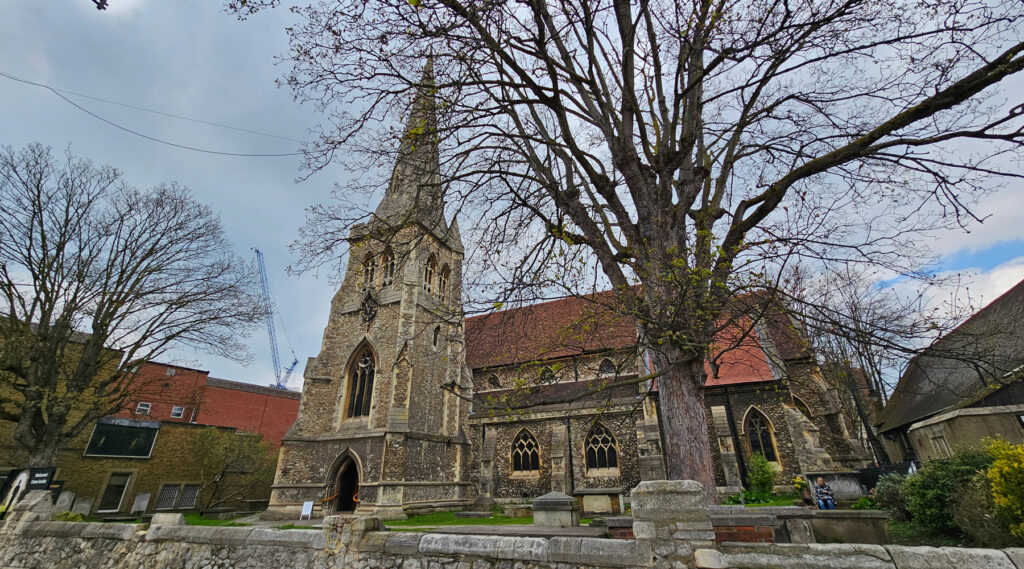This is the main church in Romford town centre, with a tall spire dominating the area, but it’s also an accidental church that was nearly considerably smaller.
The town’s first church, built by 1177 was to the south of the railway in an area known, unsurprisingly, as Oldchurch. That church was demolished in the 14th century when a new much larger church was built on the site of the current one. The new old church opened on 23d March 1410, and was dedicated to the Virgin Mary and St Edward the Confessor. An orphanage was added later, which had become a school by the 1700s, however, by the 1800s it was decided that the church needed to be rebuilt.
A new church was started just down the road, but halfway through building it, they changed their minds about what they wanted.
They kept building the new church, but downgraded it to a chapel — while plans were made for a much larger church to be built on the site of the 1400s church — and that’s the church that’s here today.
The architect is notable, as it’s by John Johnson, the man who would later go on to design the Alexandra Palace, and the foundation stone for the new church was laid on 14th July 1849, and completed in September the following year.
It’s a gothic revival design, built from Kentish ragstone with Bath stone dressings, and to save money, they reused some stone from John Nash’s Quadrant in Regent Street, which was being demolished as it had proven unpopular with the shops.
Inside, the church consists of a nave of five bays with a clerestory, north and south aisles, a chancel, a Lady Chapel and a west gallery.
There’s also something modern in the church, a 600th anniversary stained glass window that shows St Edward kneeling and, as per the legend, offering his sapphire ring to a beggar who later turns out to be St John the Evangelist.
Probably the most noticeable thing in here though is the Cooke Monument, a grand Tudor era monument to Anthony Cooke, and family, who was the owner of Gidea Hall in the 1500s.
The church seems to be open regularly if you want to pop in for a look.
The church sits alongside the market square, where an ancient market has taken place since a Royal Warrant was issued to it in 1247. That warrant caused the City of London a bit of a problem recently with their plans to move their city markets to Dagenham.
The wall that separates the churchyard from the market with an unusual stone gateway is thought to date to around the time of the building of the second church in the 14th century, so likely the oldest surviving structure in the town.













I visited a few years back, and was shown round by a delightful old lady, who explained to my why many of the statues etc. are missing hands – e.g. on the Cooke Monument. I can’t remember why though – I’ll have to visit again 🙂
Oh wow, I live next to that church! Fancy seeing it covered by Ian Visits. I should definitely pop in and take a look around